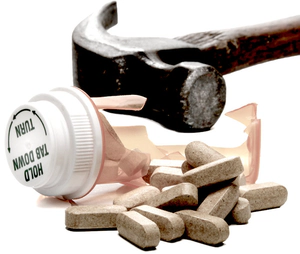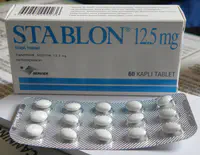What Happens When Abuse-Deterrent Pharmaceuticals are Still Abused
When prescription drug abuse really began to take off in the U.S., causing unprecedented deaths and destruction, many Americans chose to blame the pharmaceutical companies which made the drugs.

Starting in the late 1990s and coming forward into the present day, the American medical and pharmaceutical industry implemented opioid pain relievers into modern medical practice. Once this happened, hundreds of thousands of doctors across the country began administering pain meds to their patients. They were simply following instructions from the American Medical Administration and other medical groups. And their patients simply followed their doctor’s instructions by taking their meds. Fast forward a decade and a half and over four-hundred thousand Americans have died from overdoses on prescription painkillers. More than ten million have been addicted in the last fifteen years. At this point, prescription painkillers have caused more harm in the addiction scene than all other drugs combined except for alcohol.
How Big Pharma Responded
Around 2010, enough pressure was finally brought to bear on pharmaceutical companies that they attempted to divert some of the pressure off of them with their release of “abuse-deterrent” pharmaceutical opioids. Abuse-deterrent drugs were supposed to be painkillers that were more difficult to use recreationally, or which were unappealing to use recreationally. The concept behind abuse-deterrents was to make painkiller drugs that were effective in reducing pain for legitimate pain patients, but which were also effective in preventing addicts from self-medicating on them.
This was the idea behind abuse-deterrent painkillers, and the idea certainly looked great on paper. But the abuse-deterrent versions of painkillers did not accomplish what they were intended to accomplish.
A Plan that Went Awry

Abuse-deterrent painkillers are the same drug as their original version, only the abuse-deterrents are altered in some way to make them undesirable for abuse. For one, they are very hard in their texture, making it difficult to crush them into a powder for snorting. Abuse-deterrents are also chemically altered to make them sludgy and sticky if they are dissolved, making it difficult for addicts to inject them.
The problem with abuse-deterrents is that they can still be abused, simply by addicts who take them orally like legitimate patients would. There’s little evidence that abuse-deterrent opioids actually work.1 Furthermore, addicts usually find other ways to get their favorite fix even out of abuse-deterrents, as addicts are some of the most resourceful individuals out there. Another problem that came about with the release of abuse-deterrent drugs was that heroin made a huge comeback. Rather than finding ways to get high off of abuse-deterrent opioid pills, or rather than getting clean off of their addictions, struggling addicts simply switched to heroin to get their fix, heroin being the cheaper alternative to painkillers. All of a sudden, Big Pharma had not only created the prescription drug abuse epidemic our nation was steeped in, but Big Pharma contributed strongly to the heroin epidemic as well.
We Need a Pain Revolution
We need a pain revolution, and by that, we mean that we need to create and maintain effective and stable methods for reducing pain problems. Abuse-deterrents were really just a sleight of hand, Big Pharma’s attempt to reduce the pressure and the focus off of their companies for creating the epidemic in the first place. We need better solutions than that. We actually need pain relief that comes from medicines that carry no risk for addiction and no risk for negative side effects. There are such routes already in place through natural and holistic medicines, and we need to pursue these with renewed vigor.
Sources:
-
Good, C. Bernie, et al. “There’s little evidence abuse-deterrent opioids work. Why should we use them?” 2017, statnews.com Article ↩︎






 ®
®